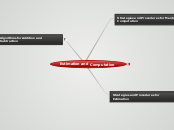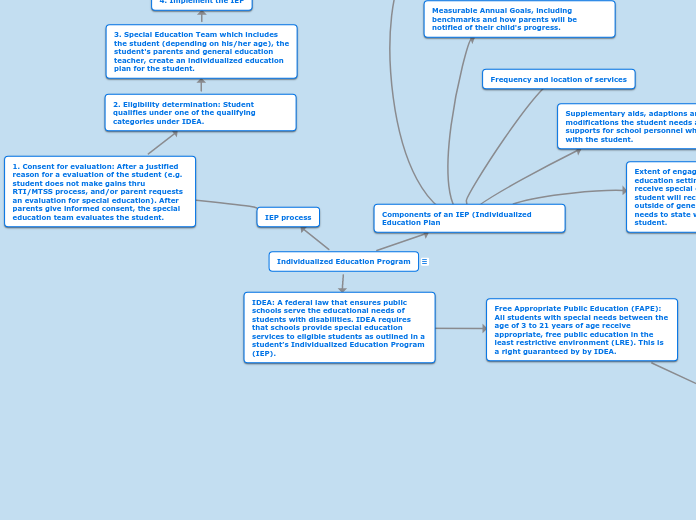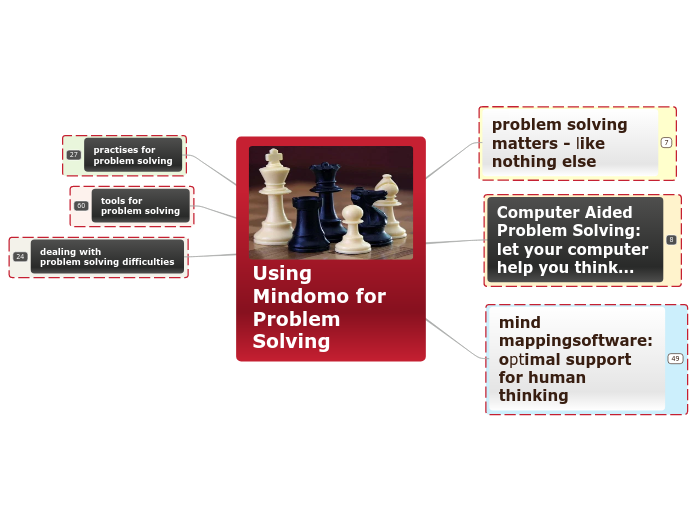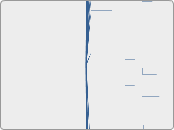Estimation and Computation
The goal of this map is to outline everything you need to learn about estimation and computation for K-6. The map provides links to outside resources that define further the concepts being presented. Outside links also provide activities and games that are appropriate for the age specified.
It should be noted that all information used in this map pertaining from section titles and notes is taken from Mathematics for Elementary School Teachers, O'daffer et al, Pearson Education, 2008.
All other links are cited in the web address.
Algorithms for Addition and Subtraction
Developing Algorithms for Subtraction
Models can be used to explain algorithms for subtraction in much the same way as they are used to explain addition algorithms.
There is more than one algorithm for subtracting whole numbers. Most common algorithms for subtraction of whole numbers use notations of place value, properties, and equivalence to break calculations into simpler ones. The simpler ones are then used to give the final difference.
Using the expanded and standard algorithms for subtraction
Use the expanded algorithm for subtraction:
245
-18
227
Think:
There are no hundreds
to subtract
Subtract tens: 245-10=235
Take away 5 ones: 235-5= 230
Take away 3 more
ones: 230-3=227 (the difference)
Modeling a procedure for subtraction
Using base-ten blocks to find differences demonstrates that many different procedures for modeling subtraction are also available. Using base-ten blocks models the take-away interpretation of subtraction.
Developing and using paper-and-pencil algorithms for subtraction
Developing Algorithms for Addition
An algorithm is a step-by-step procedure for adding and subtracting whole numbers.
There is more than one algorithm for adding whole numbers. The most commom algorithms for addition of whole numbers use notions of place value, properties, and equivalence to break calculations into simpler ones.
Using the expanded and standard algorithms for addition
Expanded algorithm for addition:
369
+244
613
Think:
Add hundreds: 300+200=500
Add tens: 60+40=100
Add ones: 9+4=13
Add the hundreds, 613
tens, and ones
Using base-ten blocks model for addition
Base-ten blocks can be used to find a sum and thus provide models that help explain the addition algorithms.
Developing and using paper-and-pencil algorithms for addition
Strategies and Procedures for Estimation
Three Main Types of Estimation
Estimation techniques draw on an understanding of numeration and knowledge of basic facts. Estimation also involves decisions about whether an estimated answer is acceptable for a given situation and which technique should be used to arrive at the estimate.
Estimating an answer
Finding a sum, difference, product, or quotient.
Choosing an estimation technique
Computational estimation techniques
A process for finding a number reasonably close to the exact answer for a calculation.
Clustering
The clustering technique involves looking for the number about which the addends cluster and then multiplying by the number of addends.
For example:
A salesperson recorded the number of customers that visited the store between 9 and 11 A.M. on the weekdays. The numbers - 48, 55, 47, 52, and 53 - all cluster around the same number, 50. The estimated total number of customers that came into the store between 9 and 11 A.M. during the week is 5 x 50 = 250.
Use this technique to estimate sums when the addends in the calculation cluster around the same number. You can also use it in a similar manner for some products.
Front-end estimation
The simplest way to use front-end estimation technique involves calculating with the leftmost, or front-end, digit of each number as if the remaining digits were all zeros.
Use this technique when an estimate is needed quickly and a rough estimate is acceptable.
Rounding technique
Rounding is a process of replacing a number or numbers in a calculation with the closest multiple of 10, 100, 1,000, and so on. Rounding is based on locating the point halfway between consecutive multiples of 10, 100, 1,000, and so on.
Estimating a measure
Finding how much length, area, volume, time, and so on.
Estimating a quantity
Finding how many students, days, lunches, classes, and so on.
Strategies and Procedures for Mental Computation
Mental Computation
Mental Computation is the process of finding an exact answer to a computation mentally, without pencil, paper, calculator, or any other computational aid.
Procedure for choosing a mental computation technique
Working toward a solution
1. Understand the problem.
2. Develop a plan.
3. Implement the plan.
4. Look back.
5. Is the answer reasonable?
6. Is there another way to solve the problem?
Break apart numbers
The break apart numbers technique involves breaking the numbers in a computation into manageable parts to permit the use of the basic commutative, associative, and distributive properties. This technique also draws on a firm understanding of numeration.
Choose compatible numbers
Numbers that are easy to compute mentally are called compatible numbers.
The choose compatible numbers technique involves selecting pairs of compatible numbers to perform the computation, usually involving a basic fact.
Count back technique
Understanding some specific mental computation techniques can help you efficiently and accurately carry them out.
The count back technique is an efficient method when subtracting 1,2, or 3; 10, 20, or 30; and so on.
Count on technique
Understanding some specific mental computation techniques can help you efficiently and accurately carry them out.
The count on technique is an efficient method for adding when one of the addends is 1,2, or 3; 10,20, or 30; 100, 200, or 300; and so on.









